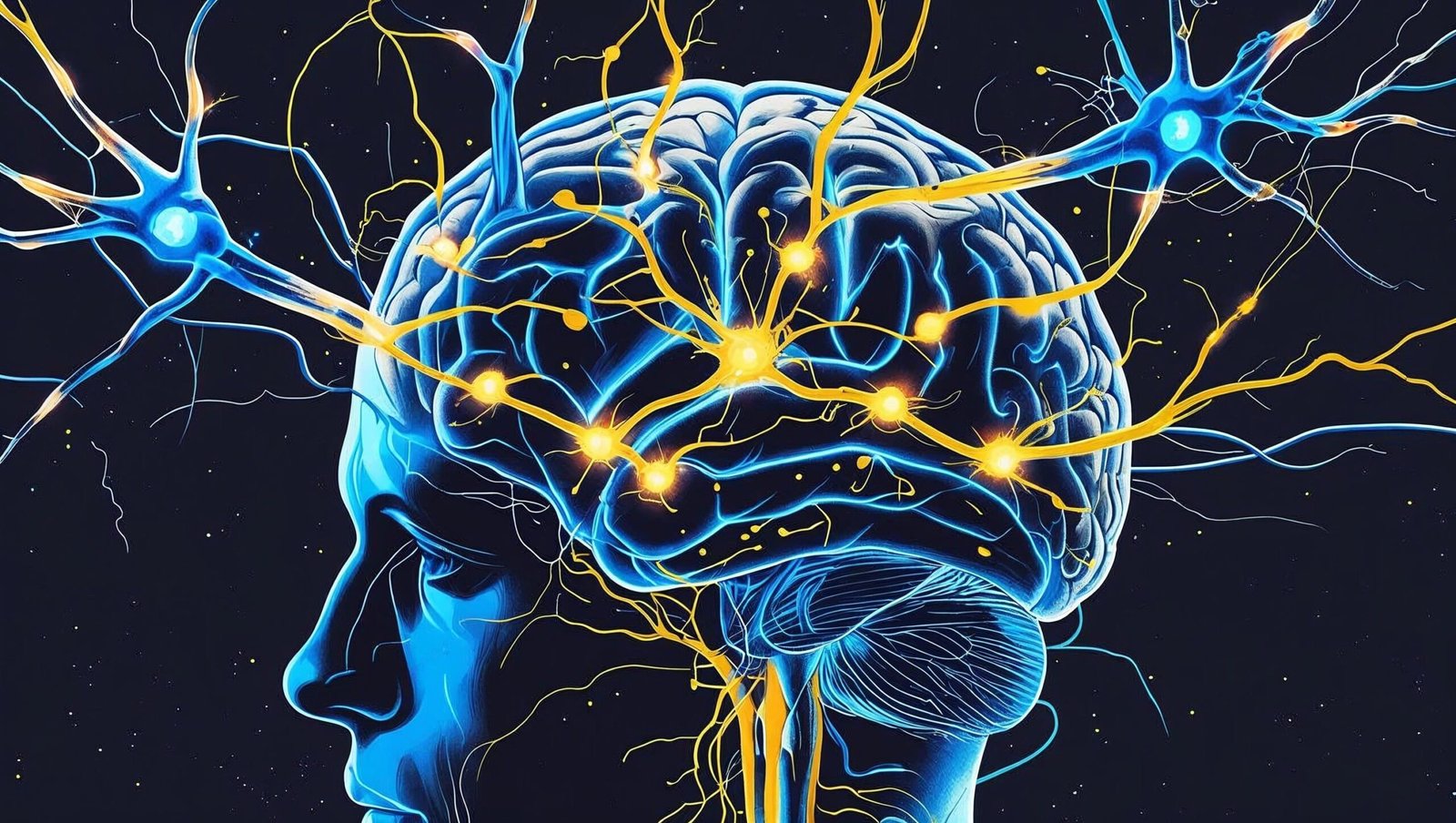Introduction
Rewire Your Anxious Brain by Catherine M Pittman is not just another self-help book; it is a clinically sound, neuroscience-backed guide that empowers readers to understand the intricate mechanisms behind anxiety. This seminal work shines a light on how the amygdala and cortex—the twin engines of fear—drive anxious thinking and how you can rewire your anxious brain to overcome it.
With a rich blend of empirical research, relatable examples, and step-by-step techniques, this book is an indispensable tool for anyone who has battled the shadows of anxiety. In this review, we will delve into seven profound insights offered by this transformative book and explore how it can help you reclaim mental freedom.

1. Understanding the Twin Engines of Anxiety
One of the cornerstones of Rewire Your Anxious Brain by Catherine M Pittman is the differentiation between amygdala-based anxiety and cortex-based anxiety. The amygdala, our ancient fear center, triggers sudden physical reactions like panic attacks. In contrast, the cortex, the rational part of the brain, contributes to anxiety through overthinking, rumination, and catastrophizing.
What makes Rewire Your Anxious Brain by Catherine M Pittman invaluable is that it explains this dual-system in accessible language, making neuroscience both digestible and actionable. Recognizing which part of the brain is responsible for your anxiety is the first step toward recovery.
2. The Power of Awareness and Labeling
The book repeatedly emphasizes the power of mindful awareness. Simply recognizing whether your fear is amygdala-based or cortex-based can help you regain emotional control. According to Rewire Your Anxious Brain by Catherine M Pittman, labeling your anxiety not only deactivates the emotional surge but also redirects the brain’s circuitry toward logic and reason.
This insight is a game-changer for those who often find themselves drowning in anxious thoughts without understanding their origin. Awareness becomes the light that guides you through the darkness of mental chaos.
3. Exposure as a Healing Mechanism
In the realm of amygdala-based anxiety, avoidance only strengthens the fear response. Rewire Your Anxious Brain by Catherine M Pittman introduces systematic exposure as an evidence-based solution to weaken the amygdala’s overactive response.
Instead of running from triggers, you face them in small, manageable doses. Gradually, the brain learns that these cues are not dangerous. The book details strategies to structure exposure sessions in a way that is safe, controlled, and therapeutically effective.
4. Cortical Control: Challenging the Thought Spiral
Where the amygdala is fast and unconscious, the cortex is slow and deliberate. Cortical-based anxiety arises from anticipatory worry, constant overanalysis, and catastrophic predictions. Rewire Your Anxious Brain by Catherine M Pittman arms the reader with cognitive-behavioral techniques to challenge these mental distortions.
From cognitive restructuring to thought records, the book equips you to unearth irrational beliefs and replace them with balanced, reality-based perspectives. This form of mental judo is pivotal in turning the cortex from an enemy into an ally.
5. The Neuroplastic Brain: Hope Is Real
Perhaps one of the most uplifting messages of Rewire Your Anxious Brain by Catherine M Pittman is that the brain is not fixed. Thanks to neuroplasticity, your brain can be rewired to respond differently to stress and fear. Through consistent practice of the techniques outlined in the book, new neural pathways are formed that reduce your vulnerability to anxiety.
This message is vital because it replaces helplessness with hope. No matter how long you’ve struggled, change is possible. The power lies in practice, persistence, and patience.

6. The Role of Lifestyle in Rewiring
While the book is firmly rooted in neuroscience, Rewire Your Anxious Brain by Catherine M Pittman does not ignore the importance of lifestyle. Sleep, nutrition, and physical activity play crucial roles in maintaining brain health and supporting recovery from anxiety.
The author explains how deep breathing, mindfulness meditation, and gratitude journaling further reduce both amygdala and cortical activation. These practices, when integrated into daily life, form a robust framework for emotional resilience.
7. Real-Life Stories that Inspire Transformation
One of the most relatable elements in Rewire Your Anxious Brain by Catherine M Pittman is the inclusion of case studies. From teenagers overwhelmed by social anxiety to adults battling workplace stress, the narratives resonate deeply with readers.
These stories demonstrate the practical application of neuroscience in real-life scenarios and make the content more than just theoretical. They serve as proof that change is not only possible but probable when the right tools are employed consistently.
Deep Dive into the Neuroscience Behind Anxiety
Understanding anxiety is often like trying to trace a storm back to the very first raindrop. Most self-help literature offers superficial explanations, but Rewire Your Anxious Brain by Catherine M Pittman penetrates deeper into the neurological roots of fear. The book emphasizes that anxiety is not merely a learned habit or an unfortunate temperament but a complex reaction arising from ancient survival mechanisms.
The amygdala, a small almond-shaped structure buried deep within the temporal lobe, functions like a smoke detector. Even the faintest whiff of potential danger triggers it. Rewire Your Anxious Brain by Catherine M Pittman makes it clear that this part of the brain does not operate logically. It cannot distinguish between a real threat—like a predator—and an imagined one, such as social embarrassment.
On the other hand, the cortex generates anxiety through abstract thinking. It is the voice whispering, “What if I fail?” or “What will they think of me?” The genius of this book is that it does not demonize either part of the brain. Instead, it teaches you how to manage each one with precision.
Addressing the Unique Challenges of Modern Life
One striking aspect of Rewire Your Anxious Brain by Catherine M Pittman is how the author contextualizes anxiety in the modern world. In prehistoric times, a sudden rush of adrenaline and a pounding heart prepared humans to escape predators. Today, however, these same responses flare up while reading emails or scrolling social media. This misalignment between biology and lifestyle fuels chronic anxiety.
The book shows that although you cannot simply shut off the amygdala or cortex, you can learn to retrain their responses. Rewire Your Anxious Brain by Catherine M Pittman offers evidence that consistent, repeated practice rewires neural pathways. Over time, your brain can learn that most of the stressors you encounter—like deadlines, criticism, and social awkwardness—are not true threats.
Bridging the Gap Between Knowledge and Action
Many people already know that exposure therapy, cognitive restructuring, and mindfulness help reduce anxiety, but they fail to apply them consistently. Rewire Your Anxious Brain by Catherine M Pittman addresses this gap by providing clear instructions, worksheets, and examples to turn theory into habit.
For instance, when describing exposure therapy, the book does not just say, “Face your fears.” Instead, it breaks down the process into manageable steps: start with a mild trigger, set a time limit, monitor your sensations, and evaluate the experience afterward. This methodical approach reduces the overwhelming nature of change.
In addition, the book recommends pairing exposure with relaxation techniques, so your body learns that the feared stimulus does not require an emergency response. This creates new associations in the brain, gradually dissolving the old patterns of panic.

Building a Sustainable Self-Care Practice
One of the most refreshing insights from Rewire Your Anxious Brain by Catherine M Pittman is that conquering anxiety is not about achieving a perfect state of calm. Rather, it is about cultivating resilience—developing the ability to experience discomfort without spiraling into helplessness.
The book offers several recommendations for sustainable self-care:
-
Scheduled Worry Time: Instead of trying to suppress worries all day, you assign a fixed time to let them surface. Over time, this trains the cortex to compartmentalize anxious thoughts.
-
Progressive Muscle Relaxation: This technique calms the amygdala by systematically releasing tension.
-
Mindfulness Practices: Mindfulness reduces cortical rumination and improves present-moment awareness.
-
Healthy Boundaries: Learning to say no is essential to preventing overload.
These practices are not quick fixes. As the author repeatedly emphasizes, consistency is key. Just as negative habits are formed through repetition, positive neural pathways require frequent reinforcement.
A Compassionate Approach to Recovery
Another remarkable quality of Rewire Your Anxious Brain by Catherine M Pittman is its compassion. The author acknowledges that people who suffer from anxiety often carry shame, guilt, or frustration. This book offers reassurance that anxiety is not a character flaw but a predictable, biological process that can be changed.
There is a certain comfort in understanding that the sensations of dread, tightness in the chest, and racing thoughts are not signs of weakness. They are simply evidence that your brain’s survival systems have become overly sensitive. When you internalize this perspective, you can begin to treat yourself with kindness rather than criticism.
What Therapists Say About This Book
Many mental health professionals recommend Rewire Your Anxious Brain by Catherine M Pittman because it bridges the gap between scientific research and practical application. Therapists appreciate how the book empowers clients to understand their own minds, reducing dependency on sessions alone.
For clinicians, it can serve as a supplementary resource, reinforcing therapeutic work done in sessions. For clients, it can function as a road map to recovery. Its structured format and clear language make it suitable for individual reading, group therapy, or as a workbook for guided exercises.
Integrating Technology with Your Recovery Journey
The modern reader has access to apps and tools designed to support mental health, and Rewire Your Anxious Brain by Catherine M Pittman encourages leveraging technology. For example, meditation apps can guide mindfulness practice, while digital journals can track cognitive distortions and exposure exercises.
Pairing the book’s techniques with supportive technology increases accountability and helps monitor progress. Even reminders on your phone to practice deep breathing can make a meaningful difference over time.

A Roadmap for Long-Term Transformation
Perhaps the most important takeaway from Rewire Your Anxious Brain by Catherine M Pittman is that lasting change requires a roadmap. This book does not claim to eliminate anxiety overnight, nor does it promise that you will never feel fear again. Instead, it offers a framework for:
-
Understanding why you feel anxious
-
Identifying whether the amygdala or cortex is responsible
-
Applying evidence-based techniques to rewire your response
-
Maintaining progress through consistent practice
In the end, transformation is a process, not an event. The book empowers you to become an active participant in your healing, rather than a passive recipient of advice.
The Silent Cost of Untreated Anxiety
Anxiety, when left unaddressed, can erode confidence, damage relationships, and reduce overall quality of life. Over time, it affects sleep, concentration, physical health, and emotional stability. Many individuals normalize their daily distress without realizing its cumulative toll. Addressing the root causes early can prevent long-term mental and physiological consequences. Empowering yourself with the right tools and understanding can open the door to resilience, self-awareness, and peace—transforming how one responds to internal and external stressors.
Final Thoughts on the Journey Ahead
If you are tired of generic self-help books that offer platitudes rather than science, Rewire Your Anxious Brain by Catherine M Pittman will feel like a revelation. Its combination of compassion, clarity, and credibility makes it one of the most powerful guides available for managing anxiety.
When you commit to applying its lessons, you will likely notice subtle shifts—less panic, more resilience, and a growing sense of empowerment. With time, those small changes accumulate into a life that feels lighter, freer, and more authentic.
Conclusion
In a world where anxiety is increasingly common, having a scientifically rigorous, compassionate, and actionable guide is invaluable. Rewire Your Anxious Brain by Catherine M Pittman fulfills this role with exceptional clarity.
As you begin your journey to rewire your anxious brain, remember that each small step counts. Whether it’s practicing mindful breathing, confronting a feared situation, or challenging a negative thought, you are teaching your brain a new way to be.
With dedication and the right tools, you can transform your relationship with anxiety from one of fear to one of understanding—and ultimately, freedom.

Why This Book Stands Out
Many self-help books merely skim the surface of anxiety or rely on vague affirmations. What sets Rewire Your Anxious Brain by Catherine M Pittman apart is its scientific precision, practicality, and clarity. It doesn’t just describe the problem; it dissects it, offering tools that are as effective as they are empowering.
This book is equally useful for therapists, students of psychology, or anyone who seeks to rewire their anxious brain with empirical evidence and concrete strategies.
Who Should Read This Book
If any of the following resonate with you, then Rewire Your Anxious Brain by Catherine M Pittman is a must-read:
-
You experience panic attacks without clear triggers.
-
You find yourself worrying about things beyond your control.
-
You want a logical explanation of how anxiety works.
-
You seek neuroscience-based strategies to overcome fear.
-
You’ve tried meditation and affirmations, but nothing sticks.
Frequently Asked Questions
1. Is Rewire Your Anxious Brain suitable for beginners?
Yes, the book is written in simple language, making it accessible even to readers without a background in neuroscience or psychology.
2. How long does it take to rewire an anxious brain using the book’s methods?
While results vary, consistent application of techniques such as exposure, mindfulness, and cognitive restructuring can lead to noticeable improvement in 4 to 8 weeks.
3. Does this book address childhood trauma?
Rewire Your Anxious Brain by Catherine M Pittman briefly touches upon past experiences but focuses more on current brain functioning and behavior change. For trauma-specific work, a dedicated therapy or book may be recommended.
4. Can this book be used alongside therapy or medication?
Absolutely. The techniques discussed can complement therapy sessions and support medication management under a professional’s supervision.
5. Is there a workbook version available?
Yes, there is a companion workbook titled Rewire Your Anxious Brain Workbook which offers exercises to reinforce the lessons from the main book.
6. What if my anxiety is severe?
Rewire Your Anxious Brain by Catherine M Pittman can be used alongside professional therapy for severe anxiety. The techniques can supplement clinical treatment but should not replace it if you are in crisis.
7. Does this book discuss medication?
The book acknowledges medication as one option but focuses primarily on behavioral and cognitive strategies. It suggests consulting a physician for personalized medical advice.
8. Can teenagers benefit from this book?
Yes, adolescents struggling with anxiety can find value in the explanations and exercises, although younger readers may need guidance from an adult.
9. How can I track my progress?
Using the worksheets and journaling exercises included in Rewire Your Anxious Brain by Catherine M Pittman can help measure progress over time.
10. Is this book only for people diagnosed with anxiety disorders?
Not at all. Anyone who experiences chronic worry or stress can benefit from the insights and strategies in this book.
Blogged by Shubhanshu Shekhar
Visit: shubhanshuinsights.com
Comment below if this book has changed your perspective—or your brain.